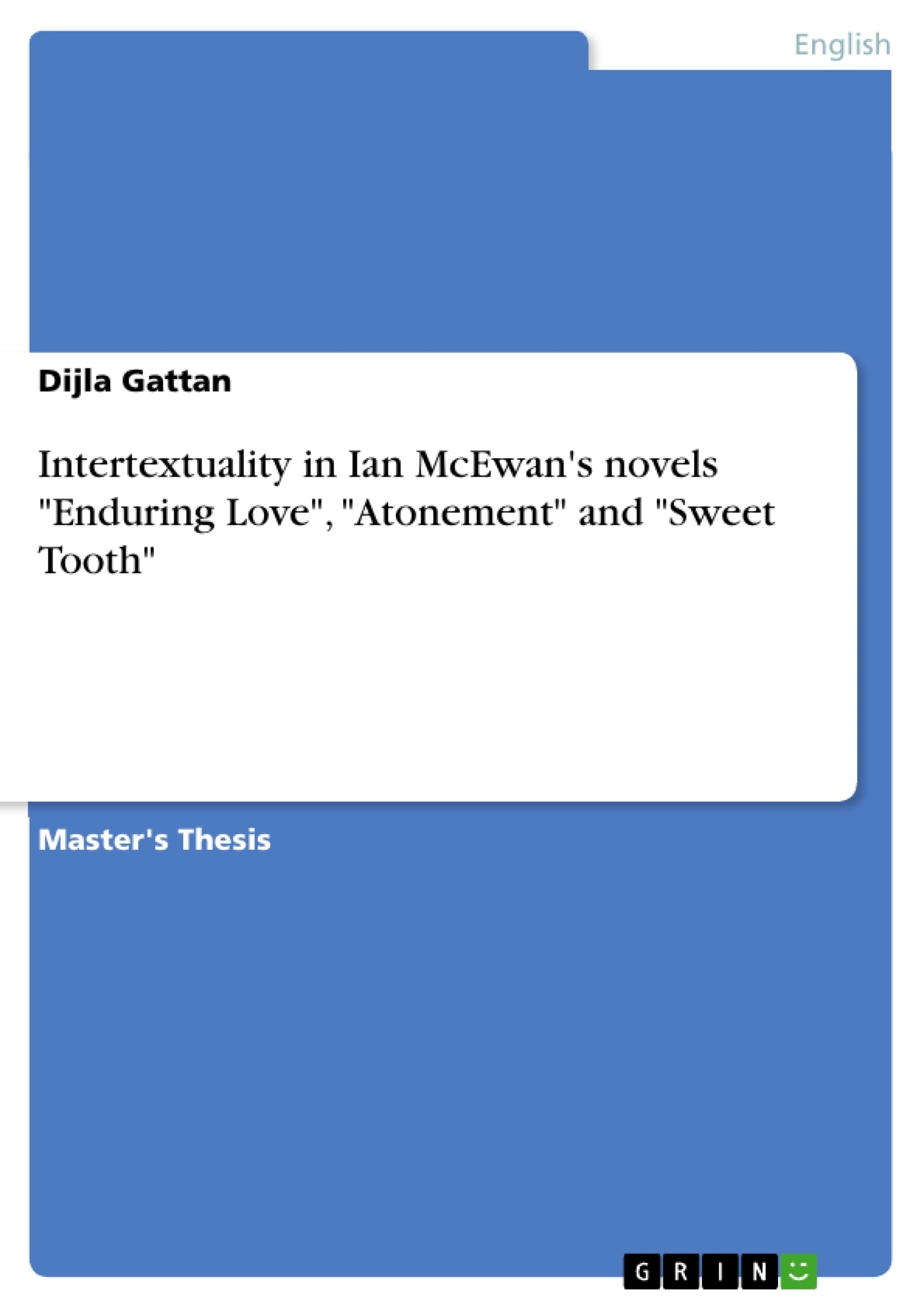This thesis deals with intertextuality in Ian McEwan's novels. The aim of this study is to show how McEwan uses intertextuality and how this technique is used to develop the themes, characters, and narration of his novels. This study tries also to label the different kinds of intertextuality that McEwan uses.
This thesis is divided into an introduction, three chapters, and a conclusion. Intertextuality is an important subject in literary and linguistic studies. As a term, it was introduced by Julia Kristeva in 1966. The main idea of intertextuality is the shaping of a texts' meanings in the light of another. Consequently, there is no text, rather intertext. Other critics and theorists developed this theory. Mikhail Bakhtin has a social approach to it. Roland Barthe adapts a textual analysis of intertextuality, and focuses on the role of the reader rather than of writer. Chapter one of this thesis is an introduction and is divided into three sections. Section one tackles the theory of interextuality. It discusses its definition, applications, roots and history, development, and its pioneers, while section two focuses on the multiple types and devices of intetextuality. Section three focuses on Ian McEwan's life and career.
Chapter Two studies McEwan's Enduring Love (1997). It tackles important issues such as the controversy between human studies and literature on the one hand, and science on the other. The researcher tries to discover what kind of intertextuality this novel has.
Chapter three discusses McEwan's masterpiece, Atonement (2001). It is a very rich intertextual novel. The researcher tries to discover McEwan's aim behind this aura of intertextuality, how he exploits them for the sake of the themes, techniques, narrative, and finally for the sake of metafictionality.
In chapter four, the researcher analyses McEwan's novel, Sweet Tooth (2012). First, the researcher tries to focus on its complexity which is due to the interconnectedness between intertextuality and metafictionality on the one hand, and its genre as a spy novel, on the other. This chapter sheds light upon how intertextuality serves metafictionality and vice versa, and how intertextuality interferes with all levels of this novel, themes, narration, structure, and characters.
Frequently asked questions about the Language Preview
What is the general topic of the language preview?
The language preview focuses on intertextuality in selected novels by Ian McEwan, specifically analyzing how McEwan utilizes this technique to develop themes, characters, and narration.
What does the language preview include?
The preview includes acknowledgements, an abstract, a table of contents, chapter summaries, and key words.
What is the structure of the thesis as indicated in the abstract?
The thesis is divided into an introduction, three chapters, and a conclusion. Chapter One introduces intertextuality theory, Chapter Two studies *Enduring Love*, and Chapter Three examines *Atonement*. Chapter Four deals with McEwan's *Sweet Tooth*. The conclusion summarizes the study's findings.
What is intertextuality according to Julia Kristeva?
According to Julia Kristeva, intertextuality refers to the shaping of a text's meanings by other texts, suggesting that there is no independent text but rather an "intertext," a tissue of inevitable references and quotations.
Which novels by Ian McEwan are analyzed in the language preview?
The language preview focuses on three specific novels: *Enduring Love*, *Atonement*, and *Sweet Tooth*.
What are some key themes and concepts explored in the preview?
Key themes include intertextuality, metafictionality, the controversy between human studies/literature and science, the role of the reader, and the impact of history on individual lives.
Who are some of the theorists mentioned concerning Intertextuality?
The document mentions Julia Kristeva, Mikhail Bakhtin, and Roland Barthes as important figures in the development of intertextuality theory.
What is Sweet Tooth about?
Sweet Tooth deals with the complexity resulting from the interconnectedness between intertextuality and metafictionality, and its genre as a spy novel.
What elements are discussed in McEwan's life and career overview?
The preview touches on McEwan's early life in military bases, his developing political consciousness, his family background, and the key characteristics of his fiction, such as feminism, the role of science and rationalism, moral perspectives, and the fragmentariness of his writing.
What are some of the influences on McEwan's Writing?
According to the preview information, McEwan's writing has influences from Romanticism, T.S. Eliot, and theories from critics such as Harold Bloom, along with a general interest in science, making the novels rich with intertextual references.
- Quote paper
- Dijla Gattan (Author), 2016, Intertextuality in Ian McEwan's novels "Enduring Love", "Atonement" and "Sweet Tooth", Munich, GRIN Verlag, https://www.grin.com/document/367579




